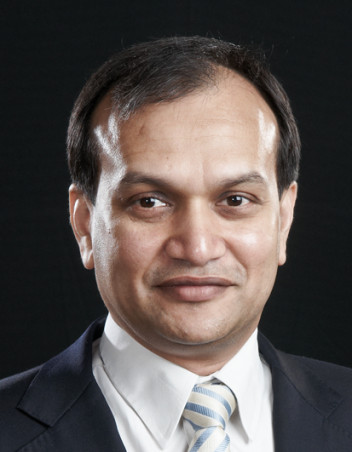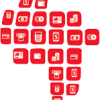TERRAPAY: A NEW WAY TO MOVE MONEY

Ambar Sur, Founder and CEO - TERRA
TerraPay, a mobile-first payment network, is revolutionising the way money moves globally. Founded with the vision to “Send Money to Any Mobile,” the company is incubated by Mahindra Comviva, a leader in Africa’s mobility financial services marketplace, and is a part of the USD 18B Mahindra group. TerraPay is building global infrastructure to facilitate instant money transfers between mobile wallet accounts, bank accounts and money transfer operators. I caught up with Ambar Sur, Founder and CEO, TerraPay to learn more about the service model as well as the future plans of the company.
What are the recent trends you are seeing in the cross-border payments market?
Wide-scale digitization is the most prominent trend in the consumer cross-border payments space. To assess the full impact of digitization, it is crucial to understand the payments stack. Functionally, the payment stack comprises multiple layers. This includes delivery channels, payment instruments, payment processing as well as clearing and settlement.
Given that digital services are fast becoming a part of what customers expect from payment service providers, a number of innovations have emerged leveraging mobile devices and connectivity to make payments simple and secure. Examples range from adoption of digital to complement conventional brick and mortar service channels to mobile wallets as an instrument to store and save monies and make purchases.
The next wave of digitization would focus on bringing standardization and improving efficiency of the underlying payment processing infrastructure. Companies such as TerraPay are focused on interconnecting digital entrants and incumbent service providers to create efficient rails to globally remit value on-demand.
Regulators, likewise, are encouraging innovation at multiple levels to improve the efficiency of the financial services ecosystem. In an increasingly cashless future, the pace of digital adoption will accelerate rapidly, reshaping the way customers consume and experience payment services.
How does the recent Pay2Global acquisition propel TerraPay’s growth strategy?
The success of any cross-border payment network is contingent on generating strong network effects. The greater the number of payment service providers on the TerraPay network, the more valuable and convenient the service becomes for customers to transfer money between friends and family.
The acquisition helps TerraPay connect Africa to critical source markets in the European Economic Area, multiplying the value we bring to our partners and end-consumers. Annually, Africa receives over USD 11B from UK and France alone. As we on-board new partners in key source markets, the value of the TerraPay network multiplies manifold, as we would be able to expand the reach and the range of services on offer.
Remittance receiving countries would also benefit from added forex inflows, which has a positive impact on the GDP.
What are TerraPay’s plans for the Africa market?
The formal consumer cross-border payment market represents a USD 64B annual opportunity in Africa. And there are significant white spaces. The informal market is expected to be 3X the size of the formal market. The market is exceedingly fragmented. Cash is the predominant instrument of exchange, accounting for over 90% of total transfers. And customers lack affordable, viable mechanisms to make small-value payments.
TerraPay aims to become the leading network for instant, low-value, cross-border payments in Africa. We has received a tremendous response from regulators and the remittance service provider community – mobile network operators, banks, top global money transfer operators and payment aggregators. Our value proposition is clear – enable real-time payments using mobile infrastructure, lower the costs of business set-up in new markets and unlock exponential growth in volume.
This is a critical time for the company. We are growing our partner network pan- Africa as well as critical source countries outside Africa including UK, France and the GCC. We are running successful pilots in several countries in Africa and our plan is to launch in half-a-dozen countries by April 2017. In the background, we are working on dozens of integrations across the continent. We have very strong opportunities in the pipeline and we are focused on executing them.
Considering mobile wallet providers are well positioned in the remittance market, how does TerraPay plan to differentiate itself?
TerraPay does not compete with existing service providers. Rather, as an international payment processing network, we partner with mobile wallet and other remittance service providers to improve their efficiency and reach. Current models to move money around the world are reliant on bilateral arrangements. A wallet service provider typically needs to negotiate and sign independent agreements with multiple banks, mobile wallet providers and money transfer operators in countries to and from which it sends and receives monies. Negotiating multiple agreements is time-consuming, expensive and restricts reach to select corridors.
 Africas leading resource for digital financial services
Africas leading resource for digital financial services


comments